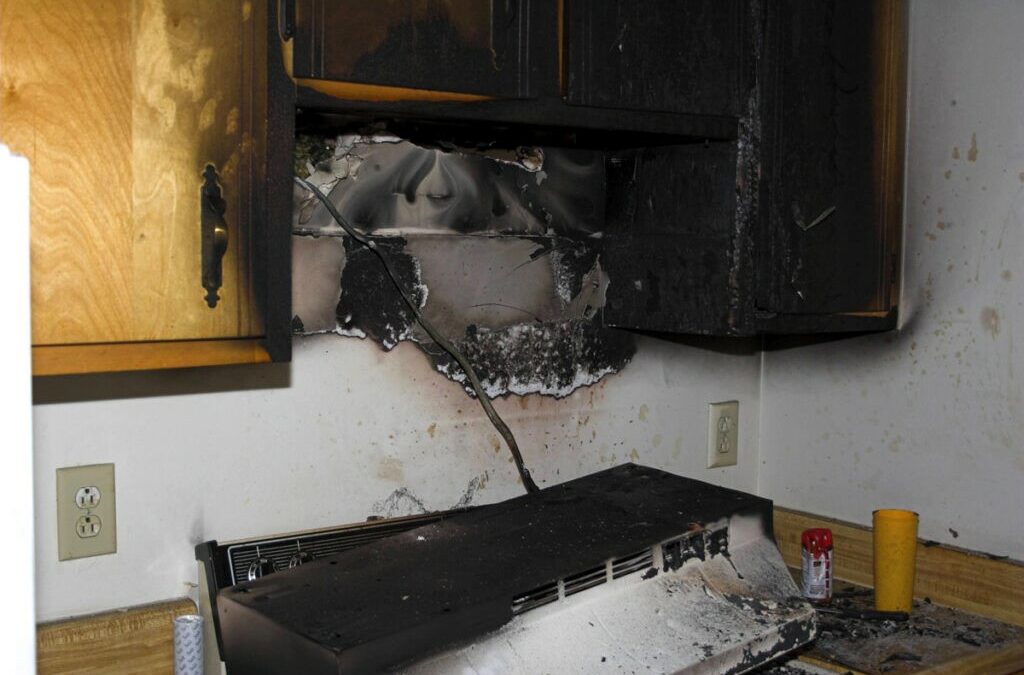How to Restore Fire Damaged Furniture? Experiencing a fire can be devastating, both emotionally and financially. Among the losses, furniture often suffers a significant hit. Whether they are antiques or sentimental pieces, losing them can be heartbreaking. Fortunately, not all is lost; many fire-damaged pieces can be restored to their former glory. In this article, we’ll walk you through the crucial steps to breathe life back into your fire-damaged furniture.

Restoring fire damaged furniture involves assessing the extent of the damage, gathering the necessary tools, and following a structured step-by-step restoration process, all while taking appropriate safety precautions.
Assessing the Damage
Before you dive into restoration, you must evaluate the state of your furniture. Is it merely smoke damaged or has it also suffered from the fire’s heat? Understanding the nature and extent of the damage will guide you in determining whether restoration is feasible or if the piece is, sadly, beyond repair.
Necessary Tools and Supplies
To embark on this restoration journey, you’ll need some specific items:
- Furniture Refinisher (Miwax or Formby’s recommended)
- Feed-N-Wax
- Quart Cup
- 00 / 0000 Steel Wool
- Clean Rag
- Nitrile Gloves
- Heat Gun (for removing melted plastic)
- Drill Gun with Wire Brush (optional)
- Orbital Sander
- Paste Wax
- Face Masks
- WD40 (for rusted metal)
Safety Precautions
Your safety should be a priority. Always wear gloves, a face mask, and protective eyewear during the entire restoration process. This ensures you’re protected from harmful chemicals and fine particles.
Step-by-Step Guide to Restoration
Initial Cleaning
Start by removing any loose debris or soot using a soft brush. This prepares the surface for the more intensive treatments that follow.
Removing Smoke Damage
Submerge steel wool in furniture refinisher placed in a quart cup for a few minutes. Then gently rub the wool along the furniture’s grain to lift the smoke stains. Multiple passes may be needed.
Stripping and Refinishing
After removing the smoke stains, you may find that the piece needs refinishing. For this, employ a quality furniture refinisher and steel wool to strip off the old finish before applying a new one.
Detailing
Intricate parts or deeply stained areas may require the use of a heat gun or a drill gun with a wire brush. These tools are especially useful for stubborn stains and corners hard to reach.
Waxing
After thorough cleaning and refinishing, apply feed-and-wax in small circles over the entire piece. Allow it to dry before applying a second coat for a glossy finish.
Final Touches
If your furniture has metal parts that have rusted, WD40 can work wonders. Spray it on the rusted areas and gently rub with a cloth.
Reader Experiences: Surviving the Aftermath of a House Fire
A Devastating Holiday Season
Last December, one of our readers faced the unfortunate loss of their home due to a fire that originated in the garage. Though the fire did not directly damage the home’s contents, there was extensive water and soot damage throughout the property. Among the affected items was a cherished chest, possibly made of pressed wood, that had been restained a few years earlier. The owner is considering saving various pieces of furniture but is unsure about the best course of action and whether insurance will cover the costs.
Insights from Industry Experts
In response, a group moderator with electrical expertise and experience working in fire-damaged homes mentioned the emotional attachment many have to their furniture. He highlighted that while refinishing is an option, the labor costs can be steep. Insurance companies often provide only a minimal replacement value, which usually doesn’t cover the costs of repair or refinishing. For items made of pressed wood, especially, the chances of restoration are slim, as the material tends to expand when wet.
Community Wisdom
Another community member shared their experience of enduring a similar ordeal three years ago, a garage fire leading to primarily water and smoke damage. The reader suggests consulting fire damage mitigation companies for professional help. In their case, a subcontractor specialized in restoring furniture, electronics, and clothing and did an excellent job. However, they caution that choosing the right restoration company is crucial. The only items they couldn’t salvage were mattresses, as they were both wet and smoke-damaged. Insurance covered the costly services of the mitigation companies, making the restoration process easier.
Conclusion
Restoring fire-damaged furniture can be a challenging yet rewarding process. By following these steps, you not only save money but also preserve the sentimental value attached to these items. It’s a labor of love that demands patience, but the end results are often well worth the effort.
FAQ Section About How to Restore Fire Damaged Furniture
Can Furniture be Salvaged After a Fire?
Yes, furniture can often be salvaged after a fire if it has not suffered extensive direct damage. The restoration process primarily depends on whether the piece has been affected by smoke or direct flame.
What is the Difference Between Smoke and Fire Damage?
Smoke damage often results in surface-level stains and odors, while fire damage can warp wood and melt upholstery, requiring more intensive restoration methods.
How to Safely Remove Smoke Odor from Furniture?
After cleaning and refinishing, you can sprinkle baking soda on the furniture and use a vacuum to remove it. Alternatively, specialized smoke odor deodorizers are also effective.
What Types of Wood Are Easier to Restore?
Softer woods like pine and cedar are generally easier to restore than hardwoods like oak or mahogany, which may require specialized treatments.
How Long Does the Restoration Process Usually Take?
The duration varies depending on the extent of the damage but expect to spend at least 5-6 hours for a thorough restoration.

